Affiliate links on Android Authority may earn us a commission. Learn more.
Japan's best smartphone is hiding an "awful" secret (hint: it's Korean)
Published onApril 9, 2015
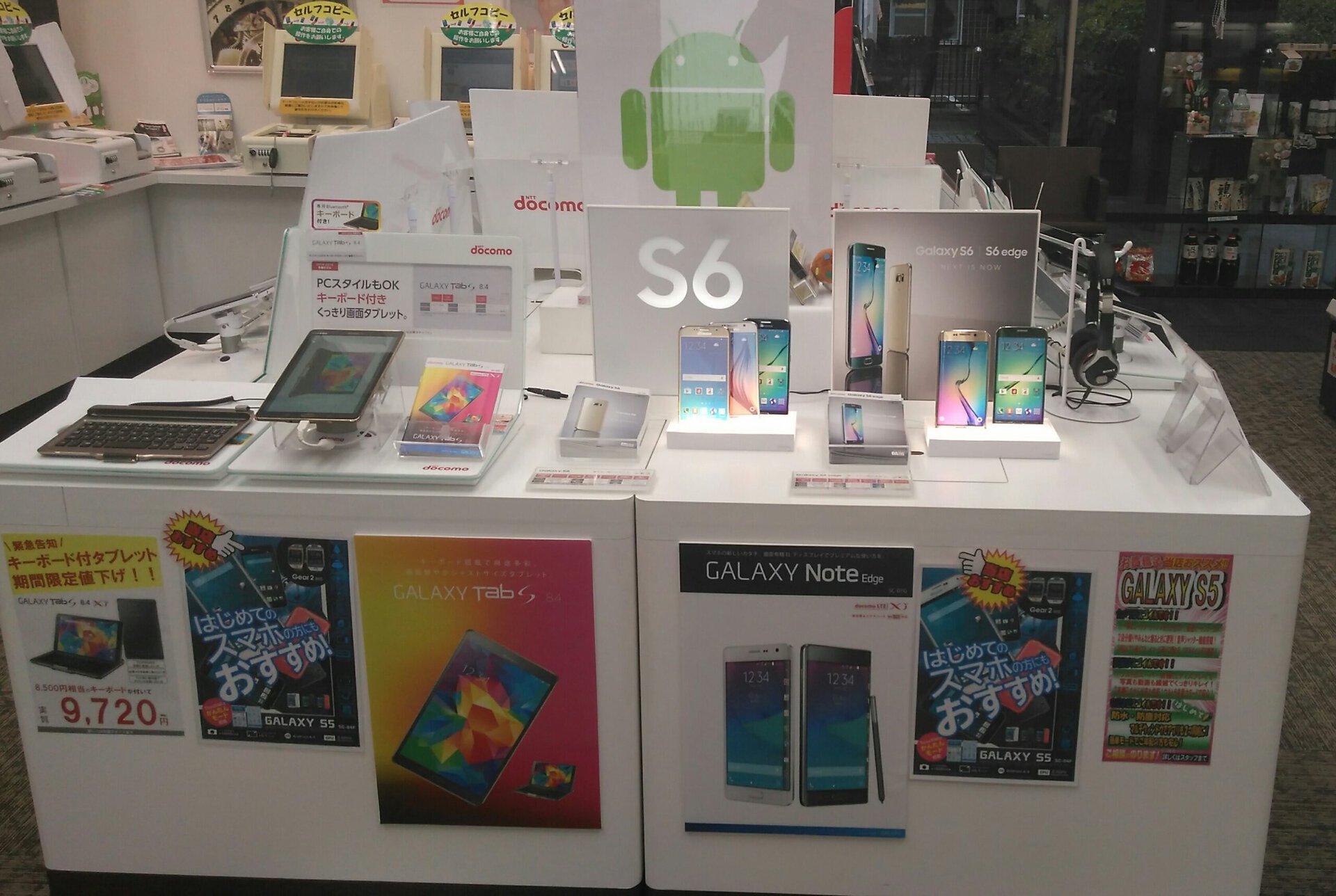
Yesterday, April 8th, Japanese mobile carriers have finally announced the release of the Galaxy S6 and S6 Edge. This potent pair of products have been off the radar from all carriers with only Samsung itself having posted bare minimal PR information on its website. As if the consumer apathy isn’t apparent enough, Japan stands to receive arguably the most abridged line-up of all, while trying desperately to hide the fact that a Korean company, has made the product: Samsung’s name has been absolutely stripped from the device, front and back, right down to the promotional materials.
Two carriers will offer Samsung’s latest and greatest, but only one will carry both the Galaxy S6 and S6 Edge. Neither will sell a device in a 128GB storage option.
- NTT docomo, the largest carrier, has announced the pair, however the line up itself is significantly stymied. The S6 will be available exclusively in a 32GB storage option, and only in Gold and Black color variants. The S6 Edge in turn, will be available exclusively in a 64GB option, in Gold and Green coloring only.
- KDDI au, on the other hand, will be releasing only the Galaxy S6 Edge, with either 32GB or 64GB of storage, and in Black, White, or Gold colors.
Suffice to say, this lack of choice in storage size, coloring, and even standard design is a bit disappointing. All the more so given that docomo’s questionable parring of Edge color options are decidedly not to everyone’s liking.
Subjugating Samsung
Both carriers have removed all traces of the Samsung name, something which KDDI has done before but is new for docomo, which typically left the Samsung logo on the rear cover, despite reduced visibility. Let’s explore, beginning with the beginning:
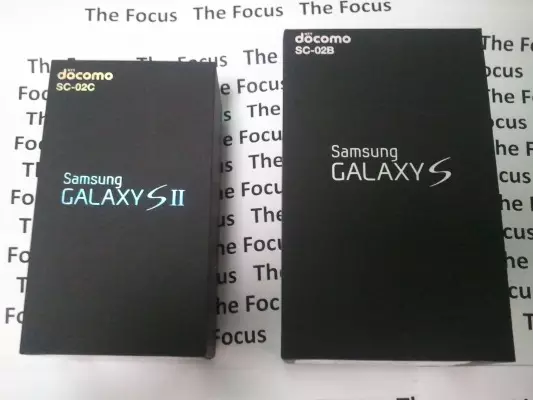
In truth, this is a rather puzzling reality that arguably began when NTT docomo released the original Galaxy S in November 2010: the Samsung logo wasn’t hidden but it was removed from the front entirely and moved to the lower half of the rear.
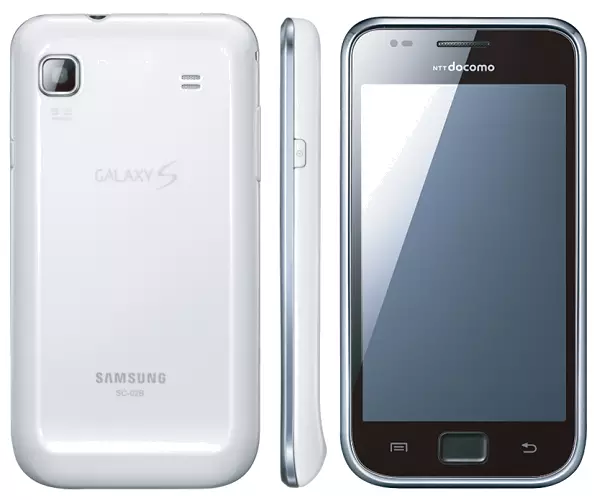
Now take a look at what had happen as of Summer 2014: no carrier logo at all on the front, and absolutely no Samsung logo period. From the KDDI au variant of the Galaxy S5:

Curiously the NTT docomo variant opted to keep the carrier logo on the front and left the Samsung logo on the back side, though it was extremely small.
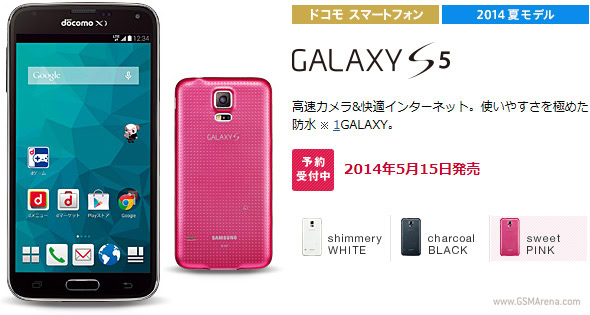
Now take a gander at the Galaxy S6 Edge. This next screen capture comes via Samsung UK’s product page:
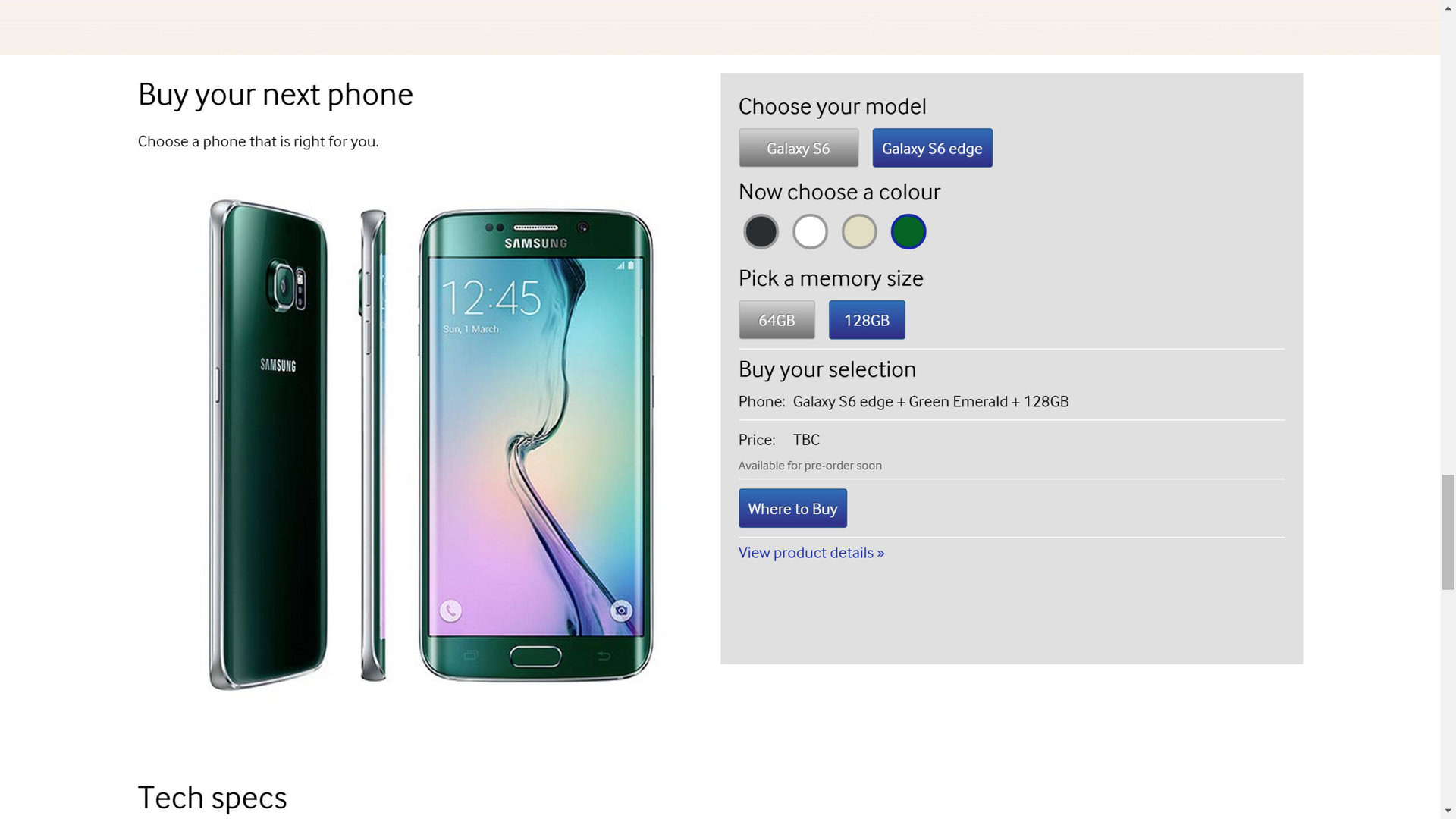
And now Japan. Here is the front of the device with the KDDI au variant pictured. See the caption for details:
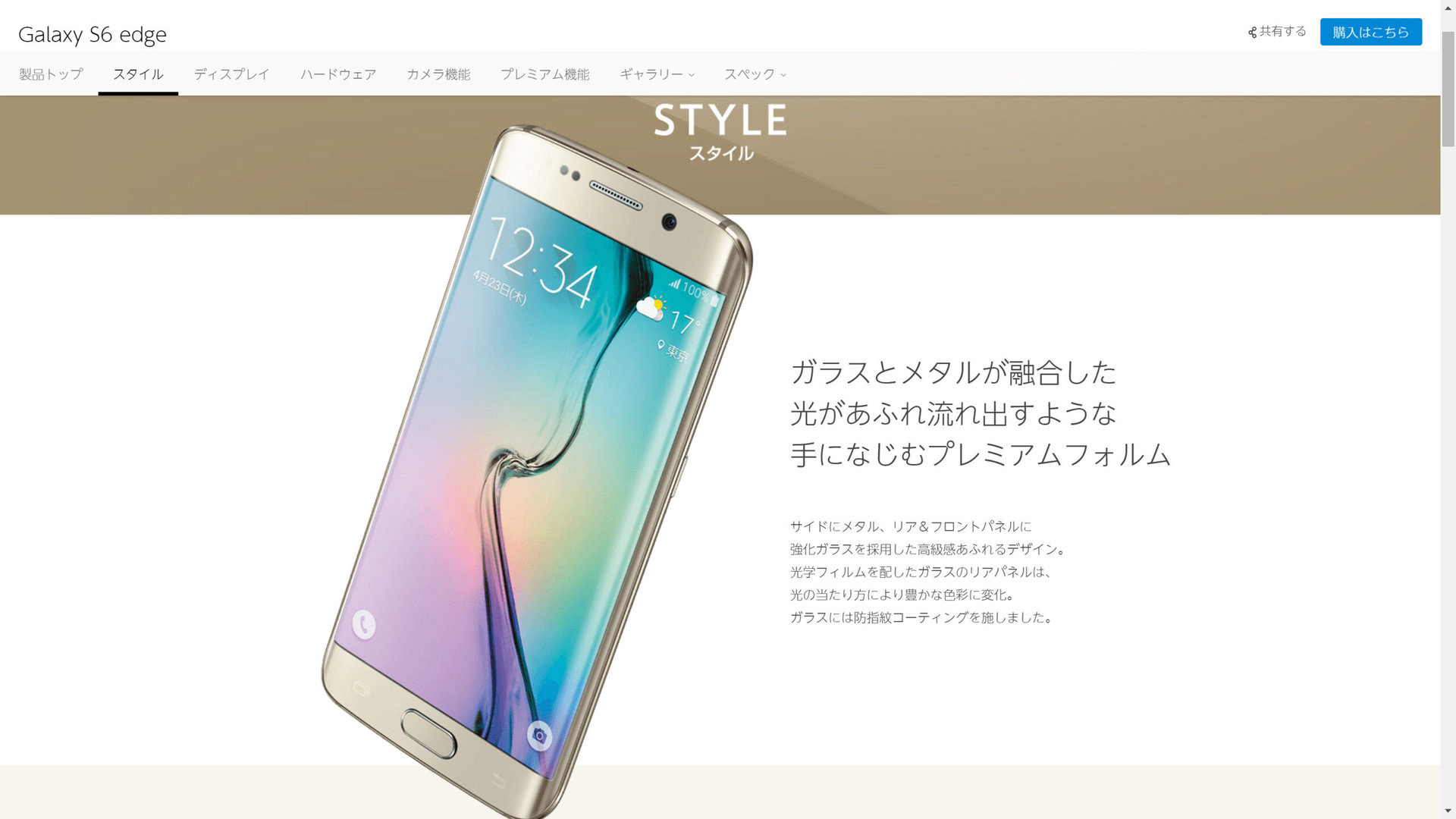
Here we have the rear side. I have specifically chosen the docomo variant as NTT had previously left Samsung’s logo, despite it being relegated to a lower positioning and smaller text. It is nowhere to be seen here, rather the word “Galaxy” is present. Bizarrely enough the Qi wireless charging logo appears.
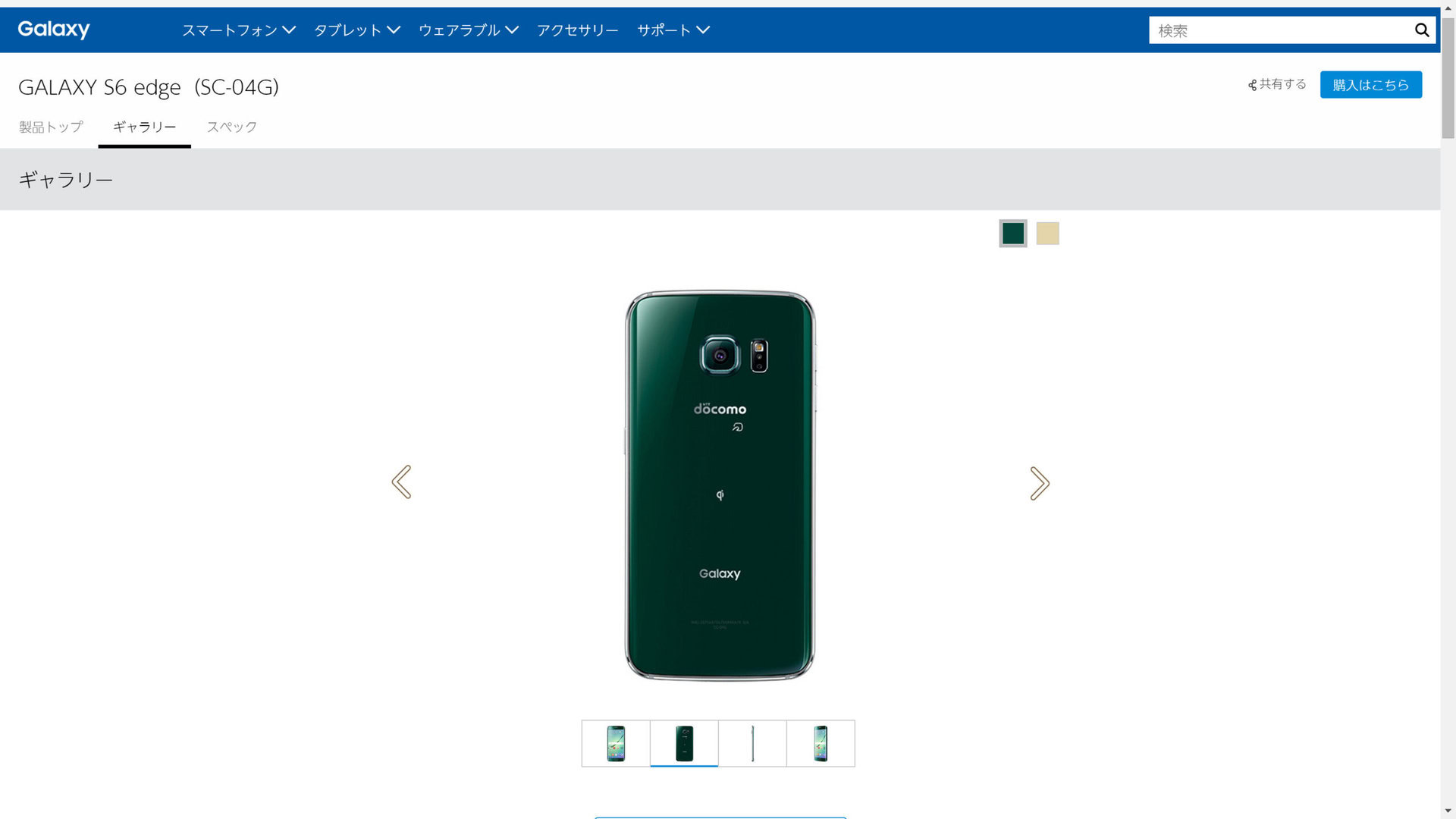
As if this wasn’t odd enough, Samsung’s logo appears absolutely nowhere in NTT docomo’s 32-page product booklet for the S6 and S6 Edge. In fact, the company’s name doesn’t even appear until page 29 and 30, where it’s used for legal reasons. For all intents and purposes, “Galaxy” might as well be the manufacturer. This is indeed what Samsung appears to be doing however, as a customer representative from the company, Retsu Segawa, mentioned the desire to focus on the brand name when contacted earlier this year.
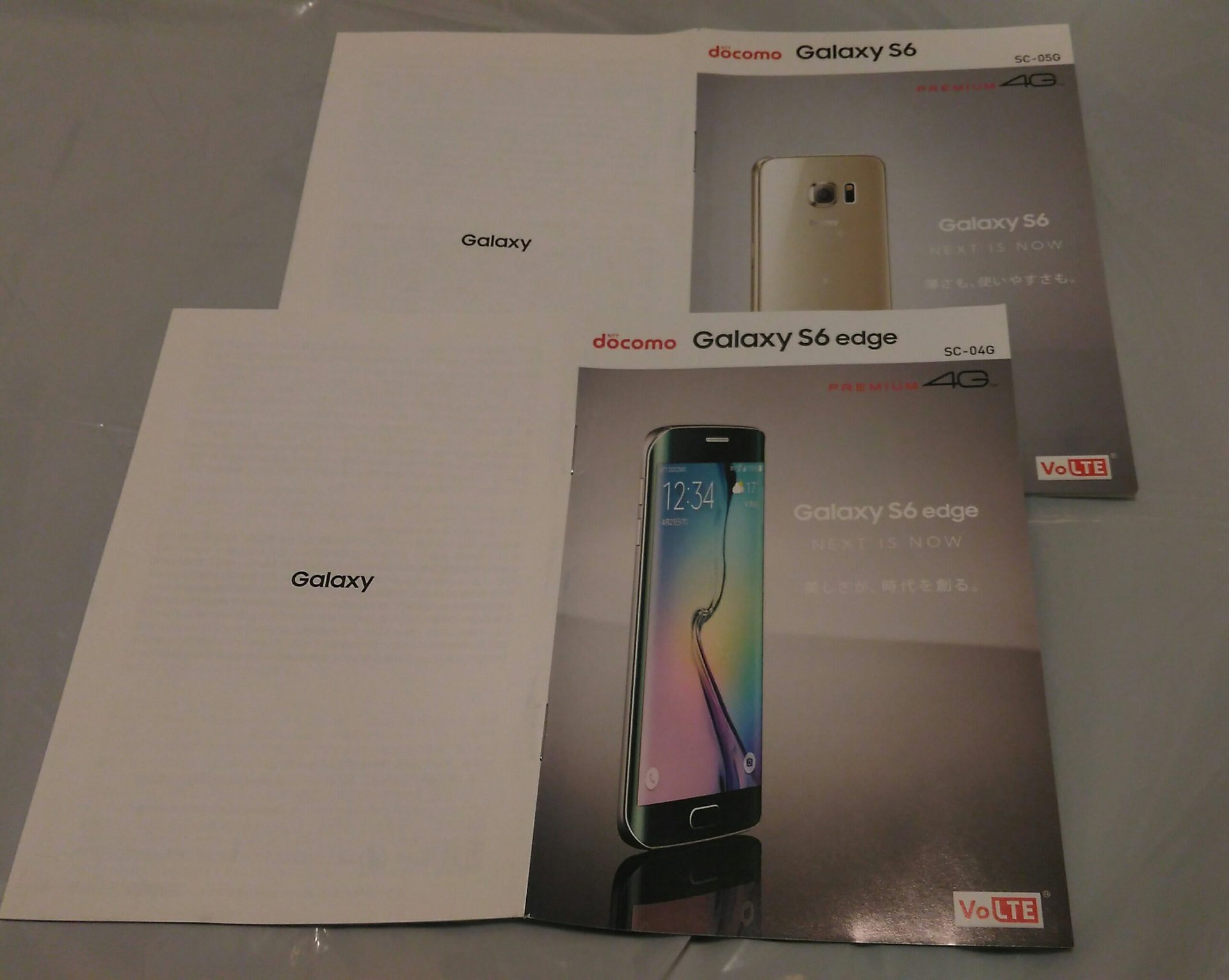
Jaded with Japan
Behind the scenes, there is the underlying pretense that Japan, as a collective, is unwilling to accept the fact that Korea has surpassed it in terms of mobile technology. This extends to the deployed network infrastructure, wherein Japan is just now getting Category 6 LTE, something that South Korea had almost a year ago.
This is absolutely shocking given that NTT docomo was the first carrier in the world to deploy 3G network infrastructure and for ages Japan’s feature phone market was light-years beyond anything the outside world could even comprehend: NFC was introduced over a decade ago, 1SEG wireless digital TV broadcasting had been a staple from around the same time, and Japan had access to full-featured mobile e-mail services whereas the world-at-large had to make due with SMS and MMS.
Arguably, there is not a single domestically produced piece of hardware that has specs comparable with Samsung’s Galaxy. This is especially true of display technology, where Korea has not only made significant use of OLED panels, but has for the past year been curving them. Meanwhile, companies like Sony continue to rely on LCD technology; at least Sharp has made some progress with the development of its IGZO display technology. Despite all this, we have the following:
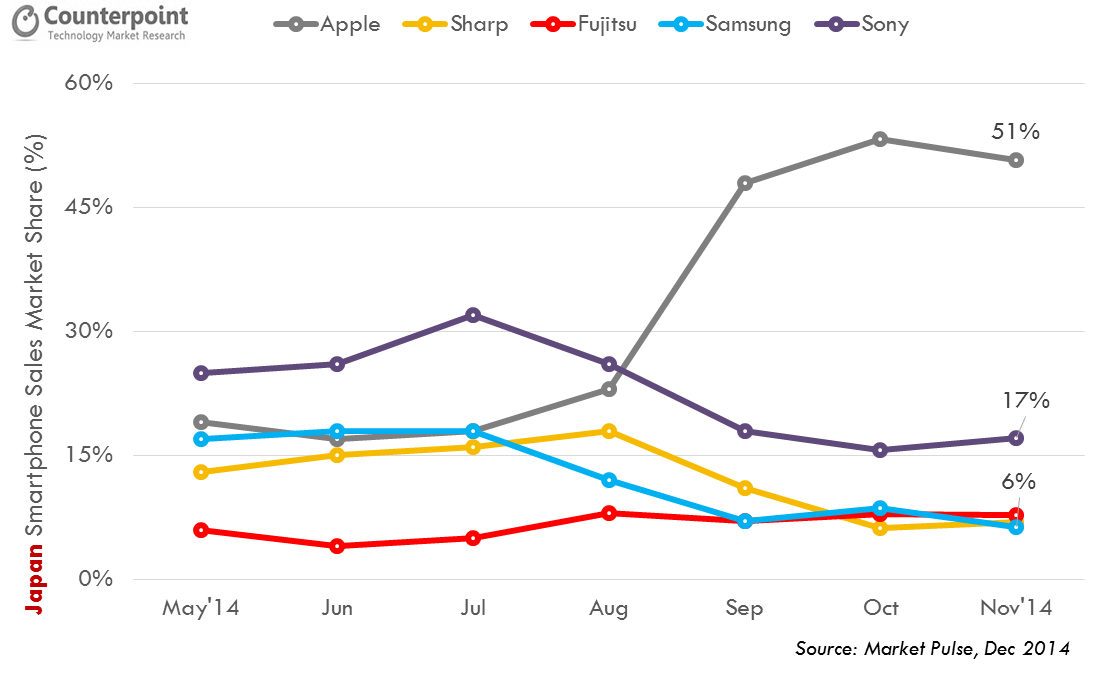
Fujitsu has a larger amount of market share than Samsung. Sharp arguably does as well. Sony has over double that. This jaw dropping astonishment is actually par-for-course in Japan, where it’s quite common to hear things like “I buy Sony because it’s Japanese.” Ironically even Japan’s patriotism doesn’t seem to hold much water when it comes to the iPhone however, with Apple once again dominating.
Wrap up
Some might argue that Japan tends to prefer its own products, and is less receptive to brands from other countries. This is largely, if not entirely, based on the fact that as a collection of islands, it’s therefore isolated. While the people here may indeed love foreign things such as Hollywood movies, American TV shows, French food, German medical practices and so on, with technology things have been largely a domestic affair. Given the unrivaled dominance of companies like Sony, Panasonic, Sharp, Toshiba, and NEC during the 80’s, 90’s and even part of the 00’s, this makes sense.
With that said, it is a bit frustrating to see the manner in which Samsung is being treated here. The company should be proud to offer such a fantastic product as the Galaxy S6 and S6 Edge, yet instead its being made to hide behind its own branding. Can’t we all just… get along?